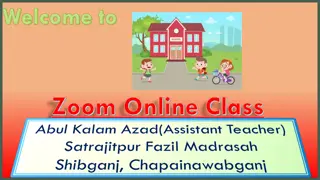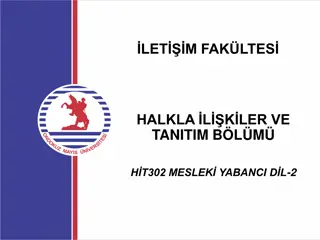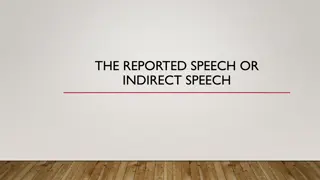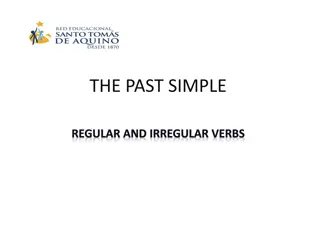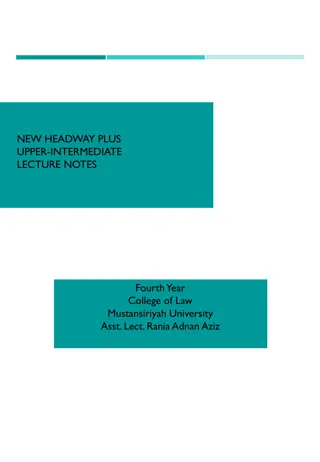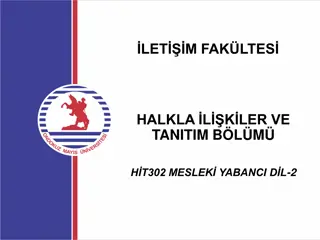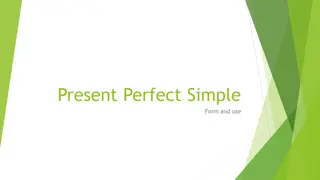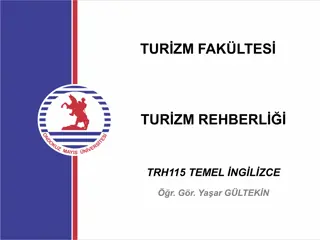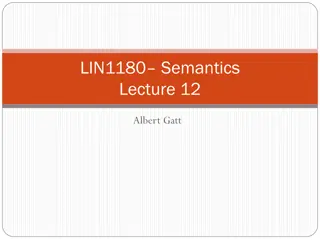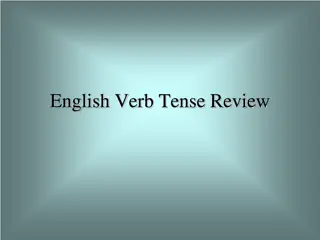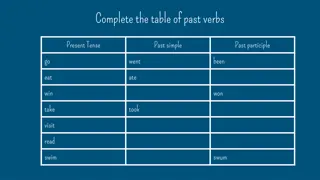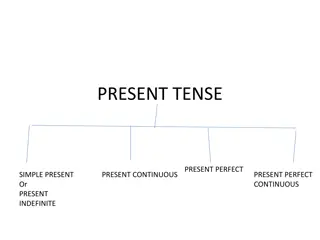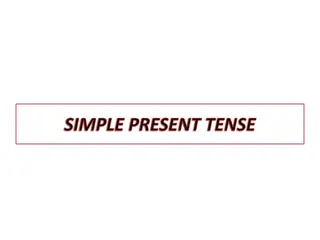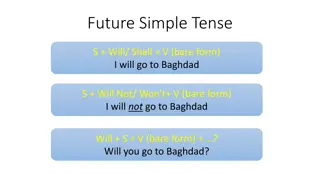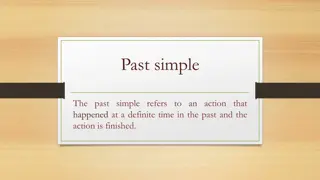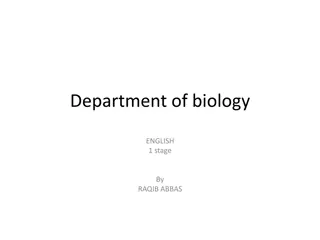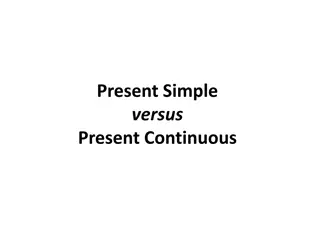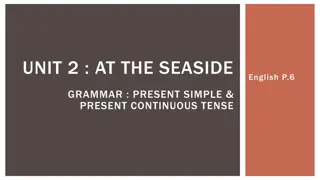Present Simple Tense in Academic Setting
Present Simple Tense is used to express daily routines, habits, and permanent states. It involves affirmative, negative, and interrogative forms of verbs. The 3rd person singular spelling rules are discussed, and examples of when to use this tense are provided. Time expressions and frequency adverbs are highlighted as well.
Download Presentation

Please find below an Image/Link to download the presentation.
The content on the website is provided AS IS for your information and personal use only. It may not be sold, licensed, or shared on other websites without obtaining consent from the author.If you encounter any issues during the download, it is possible that the publisher has removed the file from their server.
You are allowed to download the files provided on this website for personal or commercial use, subject to the condition that they are used lawfully. All files are the property of their respective owners.
The content on the website is provided AS IS for your information and personal use only. It may not be sold, licensed, or shared on other websites without obtaining consent from the author.
E N D
Presentation Transcript
PRESENT SIMPLE TENSE rea Acad mica: INGENIER A MEC NICA Profesor(a): MA. E. GUADALUPE ISLAS L PEZ Periodo: JULIO-DICIEMBRE 2015
PRESENT SIMPLE TENSE Resumen El presente simple lo usaremos para rutinas diarias, los h bitos y los estados permanentes. Abstract We are going to use Present simple tense for: Daily Routines, habits and permanent states. Keywords: Routines, habits, states.
PRESENT SIMPLE TENSE AFFIRMATIVE I YOU WORK SHE HE IT WE YOU THEY WORKS WORK
PRESENT SIMPLE TENSE NEGATIVE I YOU DO NOT DON T WORK SHE HE IT WE YOU THEY DOES NOT DOESN T WORK DO NOT DON T WORK
PRESENT SIMPLE TENSE INTERROGATIVE DO I YOU WORK? SHE HE IT DOES WORK? WE YOU THEY DO WORK?
PRESENT SIMPLE TENSE 3rdperson singular - spelling 1. In general, the third person singular is formed by adding an s to the base verb. work He works 2. Verbs ending in ss, x, ch, sh, o add es to the third person singular. dress She dresses fix He fixes watch She watches T.V. wash She washes go It goes ! 3. Verbs ending in consonant + y, changes the y to i and add es . Consonant + y i + es: cry cries, fly flies, terrify - terrifies
PRESENT SIMPLE TENSE is used to describe: 1. Facts which are always true general truths, e.g. facts in science and geographical descriptions. Water freezes at 0 degrees.
PRESENT SIMPLE TENSE 2. Actions that happen regularly (Habitual actions). A frequency adverb is often used. They usually take a walk with their son.
PRESENT SIMPLE TENSE 3. Opinions, likes and feelings. She likes making snowmen.
PRESENT SIMPLE TENSE TIME EXPRESSIONS: FREQUENCY ADVERBS: ALWAYS, OFTEN, GENERALLY, USUALLY, NORMALLY, SOMETIMES, NEVER. HE NORMALLY COOKS PASTA. OTHER TIME EXPRESSIONS: EVERY DAY, EVERY MONTH, EVERY YEAR, ON SUNDAYS, AT THE WEEKENDS ETC. MUSICIANS SOMETIMES WORK ON SUNDAYS.
Referencias Evans, V. y Dooley, J. (2010). Upstream. Beginner. Express Publishing.


